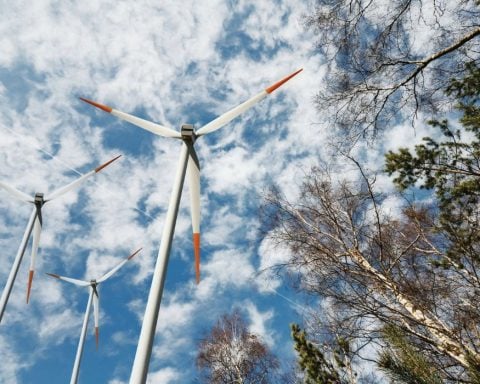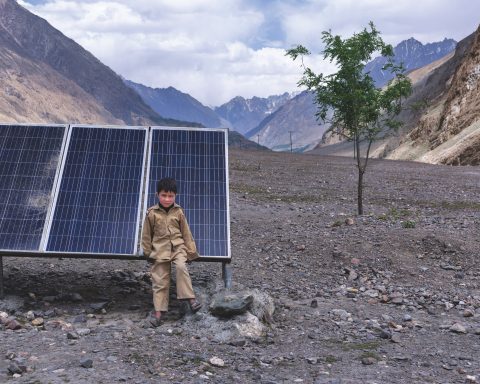Nuclear waste. When these two words are spoken, the camps are drawn.
Nuclear proponents say, “No problem, all is well. We’re talking minor amounts. This shouldn’t be a barrier to building new reactors or refurbishing old ones.”
Nuclear opponents say, “Along with issues such as safety, security, nuclear weapons use and high costs, waste management is yet another reason to reject nuclear as an energy option.”
What are the facts and the challenges related to nuclear waste, specifically for Canada but applicable worldwide?
First, nuclear waste from power plant reactors is only part of the story of the waste generated during the nuclear cycle. Uranium mining, like all mining but with the added issue of residual radioactivity, generates waste that must also be handled properly. This is important for Kazakhstan and Canada, the two largest producers of uranium. In other uses of nuclear materials, such as medicine, research and industry, waste is also generated.
By far the biggest concern, however, is with the high-level waste (HLW) resulting from spent fuel coming from the hundreds of nuclear reactors in operation around the world. Nuclear generating stations also produce low- and medium-level waste. These other waste streams, although less hazardous than HLW, are more numerous and can be controversial, too.
In Canada, high-level waste has been generated from energy production since the 1960s, mostly in Ontario but also in Quebec and New Brunswick. And for most of that time, the nuclear industry, both federal and provincial governments, and citizens have accepted the benefits of nuclear-generated electricity without any planning to permanently handle and store nuclear waste. In fact, this is the situation worldwide, even as several countries plan for new reactors. As HLW is radioactive for thousands of years, it represents a very long-term problem that continues to grow.
HLW results from the spent fuel bundles used in the reactors. Once depleted, they are stored on site in special pools – which look like swimming pools – for seven to 10 years. After that period, during which these hot bundles cool off, they are moved to dry storage canisters located at the site of the nuclear plant. As there are no long-term storage solutions presently available in Canada or the United States, there is no prediction as to how long this temporary storage will be needed.
As of 2012, there were 2.3 million used fuel bundles in Canada, equalling 55.2 million kilograms of HLW, held at temporary storage sites in Ontario, Quebec and New Brunswick. The number of used fuel bundles is projected to grow to four million before Canada's reactor fleet reaches end-of-life.
So what is the plan to handle HLW in the long term? Worldwide, this has been the dilemma for governments. This dilemma has resulted in virtual inaction on the issue of permanent storage, with studies, proposals and technology investigations continuing for years at a cost of billions of dollars.
In Canada, the first comprehensive look at long-term storage started in 1978 with a direction from the Canadian and Ontario governments to Atomic Energy of Canada Limited (AECL) to develop the concept of deep geological disposal for nuclear fuel waste. The result, after two decades, was a document known as the Seaborn report. Four years later, in 2002, the Canadian government passed the Nuclear Fuel Waste Act, which launched the Nuclear Waste Management Office (NWMO) to investigate options. This new organization took a different approach – termed Adaptive Phased Management – by focusing on social acceptance of permanent disposal options as well as technological feasibility and safety.
By 2010, NWMO began to identify “informed and willing” host communities for geological disposal. As of 2012, 21 communities had expressed an interest in learning more about the project. However, it may be 2025 before actual project management begins. In the meantime, HLW continues to be stored in more and more dry storage containers on power plant sites. The more positive news is that since 2002, the utilities that own these sites and AECL have been required to have financial guarantees in place to pay for waste management.
So who sets the rules for nuclear waste management? In the United States, the Nuclear Regulatory Commission provides industry oversight, while that role in Canada falls to the Canadian Nuclear Safety Commission. Worldwide, nuclear waste management is under the auspices of the Joint Convention on the Safety of Spent Fuel Management and on the Safety of Radioactive Waste Management, administered by the International Atomic Energy Agency of the United Nations. This convention is voluntary on the part of its signatories. Through reports and meetings of the convention every three years (most recently in 2012), the signatory nations report on their waste management oversight.
According to the 2012 Review Report, “long-term management of spent fuel and high-level radioactive waste remains a challenging and difficult topic with considerable areas for improvement.” The report reaffirmed “the importance of taking spent fuel management and radioactive waste management into account from the very beginning of any nuclear activities such as expanding nuclear power programs.”
Some countries such as Finland and Sweden have progressed, albeit slowly, on a permanent depository for HLW. Other countries have seen their efforts stall, including the United States, despite its earlier Yucca Mountain proposal in Nevada. The United Kingdom created the Nuclear Decommissioning Authority in 2004. However, only in October 2006 did the U.K. government accept a recommendation that the best approach was geological depository. Its current plan would see a depository by 2040.
Despite a tendency by some non-nuclear power countries to finger point at the countries with HLW due to nuclear reactors, virtually all countries have a problem of long-term storage of low- and medium-level waste generated, for example, by medical uses. Nuclear waste is all around us.
What are the challenges now? Public perception of the nuclear industry in general, including waste management, is not positive in many countries. This has resulted in stalled refurbishments and abandoned build programs, despite the lauded “nuclear renaissance” of a few years ago. Of course, public perception is not the only cause of this situation. The financial crisis has resulted in less demand for electricity and less ability by governments – federal, provincial and state – to finance the infrastructure, subsidies and building of reactors.
Canada is a prime example. Quebec halted the refurbishment of its Gentilly-2 reactor in 2012 and has decided it should be decommissioned. The Ontario government recently announced that it will not be moving ahead with a new build project at its Darlington site near Toronto, and it is questioning the refurbishment of current reactors.
But even if not one new nuclear plant is built from this day forward, the radioactive waste accumulated to date from past and present reactors will remain, as will the reality that the world does not yet have a long-term solution for managing high-level waste.
There are many reasons for the lack of action. One big reason has to do with the lengthy timelines required for the planning and execution of long-term waste disposal plans. The decades needed for such work is not compatible with the four-year planning horizons of politicians. For them, the way forward is riddled with hazards and there are few incentives to take concrete action. After more than half a century of punting the problem to future governments and generations, we’re still left with a plan proposing a plan in 2025 or some other far-off date. That’s clearly not enough.
The Blue Ribbon Commission on America’s Nuclear Future, in its final January 2012 report, stated: “The need for a new strategy is urgent, not just to address these damages and costs but because this generation has a fundamental, ethical obligation to avoid burdening future generations with the task of finding a safe, permanent solution for managing hazardous nuclear materials that they had no part in creating.”
As an alternative approach, can the amount of high-level waste accumulated to date be reduced instead of disposed? The reprocessing of waste, which would shrink the amount of long-term storage required, is technically possible. Tyler Hamilton’s article on page 68 explores this option.
But today the nuclear industry faces a crisis of confidence, amplified by public and political perceptions formed in the aftermath of the nuclear disaster at Japan’s Fukushima Daiichi power plant. More than 3,000 used and unused fuel-rod assemblies stored in large pools at the earthquake-shaken facility, particularly those at crippled Reactor 4, are at risk of leaking dangerous levels of radiation. Careful efforts are being made to move the most vulnerable fuel assemblies to a safer location. The fear is that if the water in the storage pools evaporates, it could release a large radioactive cloud with the potential to reach and force the evacuation of Tokyo.
Tokyo Electric Power, the Japanese utility that operates the power plant, has so far received poor grades for its handling of the crisis. Overall, the view is that company, government and regulatory oversight has been weak. Questions have emerged regarding the quality of regulatory inspections conducted by the International Atomic Energy Agency.
In Canada, the apparent failure of nuclear companies and the federal regulator to adopt enterprise risk management approaches that acknowledge high-risk scenarios, such as rare, unpredictable “Black Swan” events, is also worrisome as the country’s reactors age. So are the financial impacts of long-term storage, and the willingness of citizens to pay for its management.
Canadian reactors – and most around the world – are owned by governments with high debt loads, and these governments need to pay for services that citizens want now. They are not keen to pay for the storage of yesterday’s waste. This gap in acceptance of this responsibility can only increase as clean alternatives to nuclear power are further developed.
This is a brief glance into the situation facing us all. We continue to use nuclear power yet are unable to find the long-term solution to the waste it generates.
Over time, it will become even less likely that we will want to pay for it.





